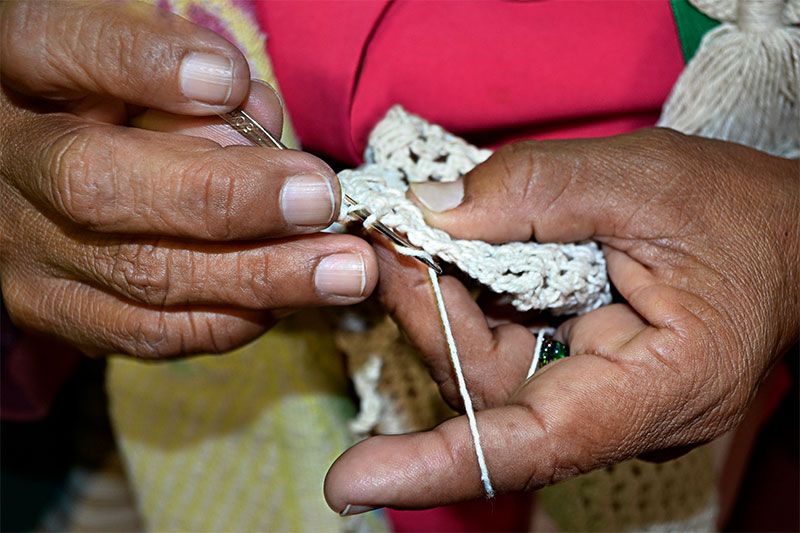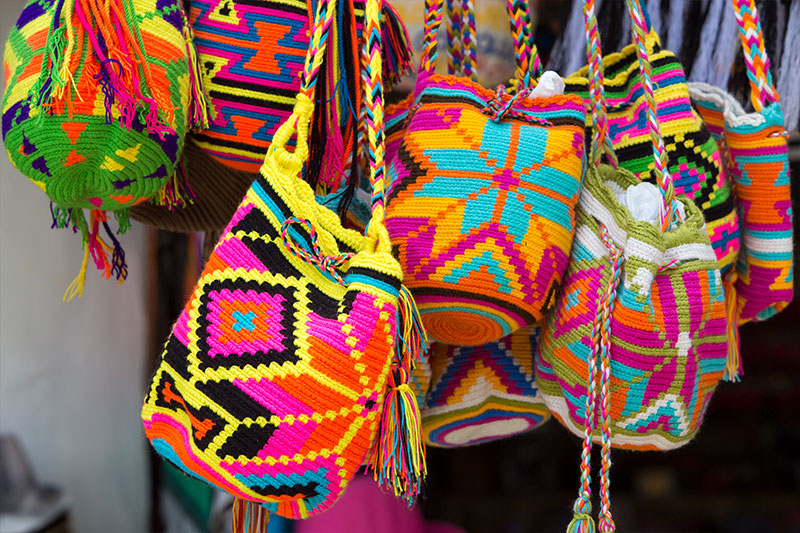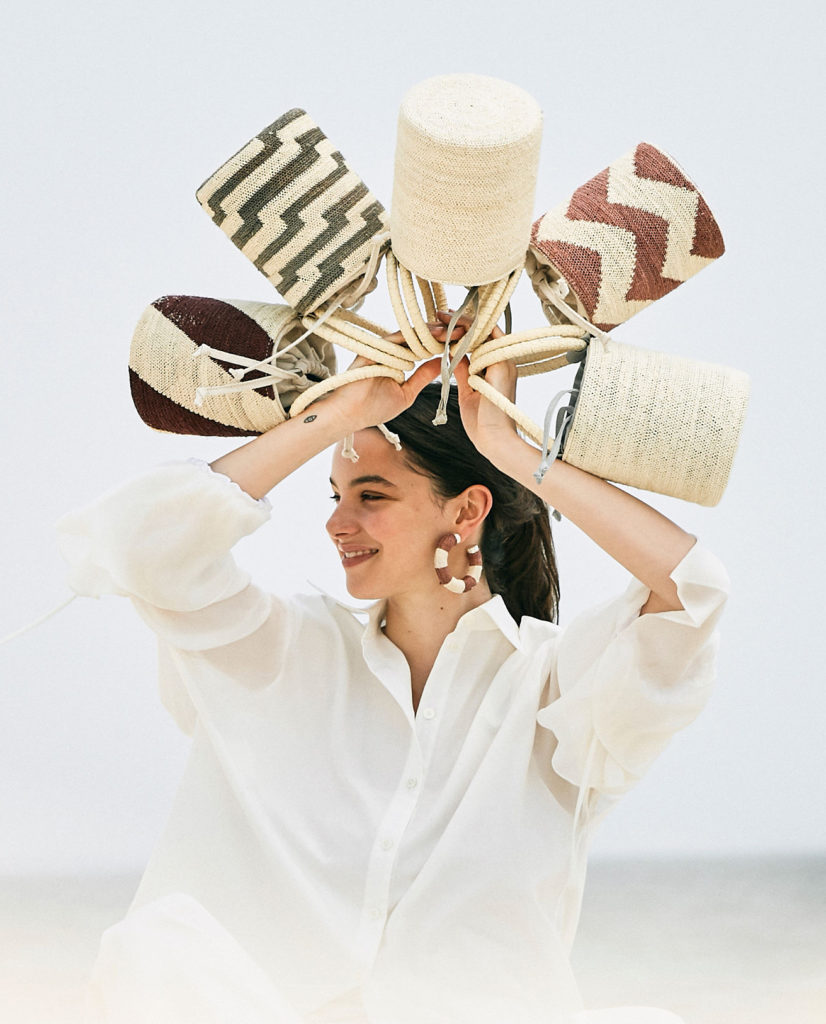
The story of artisan behind the mochila bag in Colombia
Have you ever bought Colombian mochila bag? If your answer was “not yet”, you will love the story inside handcrafts made by members of different indigenous communities in Colombia.
Get to know the Colombian mochila bag activity through Indira
Indira Mendiola Montero is one of the 30.000 artisans of the mochila bag of the country. She lives in San Juan, an indigenous shelter just an hour away from Valledupar, in the region of Cesar. There, it’s located a small group of Colombian artisans of handcrafts (195 artisans in total), according to the last Statistical Information System of Crafts Activity. Artisans in Colombia
| Department of Colombia | Artisans |
| Boyacá | 1.988 |
| Atlántico | 1.964 |
| Bolívar | 1.825 |
| Nariño | 1.750 |
| Tolima | 1.588 |
*By Artesanías de Colombia San Juan, located on the eastern south side of The Sierra Nevada of Santa Marta, is the home of the Kankuamos, the indigenous community which name means “guardians of the world’s balance”. Also, to the indigenous people that Indira, a creator of Colombian mochila bag, belongs to. Indira is married and has three children, all of them are men. Being a woman in the community has an important cultural activity value, as the authentic creator of the handcrafts. For 30 years she has been dedicated to this work, almost half of her life weaving the symbolism of the Kankuamos community.
How is the Kankuamos crafts activity

First, you need to know that inside the community women and men have a different role referring to the mochila bag activity. Men help women in the first part of the handcrafts process, especially with the transformation of the raw material. In this case, the natural fiber that comes from the Maguey leaf, mostly known as “fique”. Every morning, before the sun starts to rise, they scrape the blade with a woody knife called “macana”.
Then, a new part of the process starts. Already in the afternoon, women’s crafters begin to weave every thread creating backpacks according to Colombian culture and traditions, such as the “mochila bag”, one of Colombia’s most symbolic handcrafts. After this, there’s the final and the most inspirational part: spin the “fique” and create the design. Indira call this as the “dream behind the handcrafts” because it’s the moment when they transfer their cultural identity, knowledge, and personal thoughts.
Weaving is like a personal journal. Means a moment, a thought, a feeling, the female crafters energy.
How many crafts activities and techniques exist in Colombia?
Around 22 crafts activities and 50 artisanal techniques, such as: basket, weave, pottery, ceramics, leather goods, woodworking, garrison, binding, structured volumes, carpentry, cabinet, lutheria, work in glass, stonework, goldsmith, silverware, jewelry, work on nuts, work on seeds and beads, cerería and jabonería.
How many types of handcrafts exist in Colombia?

According to Artesanías de Colombia there are three types of crafts:
- Traditional handcrafts
It is made by artisans specialized in the production of useful and decoration objects. This activity is a profession which has been transmitted from generation to generation.
- Ethnic handcrafts
It is considered as a material expression of culture within communities. They produce useful and decoration objects, that are also rituals.
- Contemporary handcrafts
It refers to innovative products resulting from the ability to transform raw materials and implement co-design processes with artisan communities. This is the mochila bag activity that Indira does with Colombian brands such as Mola Sasa.
Discover Mola Sasa, Colombian mochila bag and crafts accesories
Indira has been working with Mola Sasa for two years, creating unique handcrafted pieces and transferring their traditional art, symbols, and handcrafts into a variety of handmade accessories like Mola Sasa's Cylinder Bags and Maguey Earrings.

“Working with Colombian artisans is an honor. We work with four indigenous communities of the country: Kuna, Afro communities, Kankuamo, and Zenú. We empower artisans, we love creating a relationship with them, building confidence and respect every day. Because we want to highlight their skills and their personal stories with every handcrafts collection”, mentioned Yasmin Sabet, the founder and designer of Mola Sasa.

Discover #TheBestofColombia behind the stories of each craft, that vibrates with its colors, textures, and designs. It’s time to know the diversity of the Colombian culture.
Related articles:
Colombia’s most original gifts
Five places to visit if you want to learn about Colombia’s indigenous culture
Eight Colombian products that are setting trends across the globe
 Bienvenue, vous êtes dedans
Bienvenue, vous êtes dedans 

